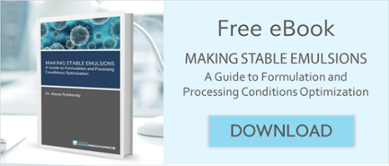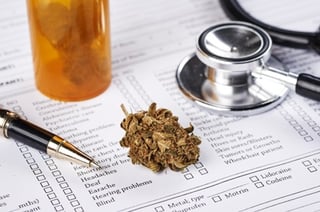 There are many ways to administer medical and recreational cannabis, each with its own benefits and drawbacks. One common feature, however, is that only a certain (generally small) percentage of the consumed cannabinoid content, defined as "bioavailability", can be absorbed into the bloodstream with each method. This stems from the fact that cannabinoids are not water-soluble and, therefore, not readily compatible with the predominantly water-based human body. Water-soluble compounds such as ethanol, on the other hand, can be quickly and efficiently delivered to the bloodstream via a variety of alcoholic beverages, eliminating the need for other delivery methods. Wouldn't it be great if the same could be done with cannabis?
There are many ways to administer medical and recreational cannabis, each with its own benefits and drawbacks. One common feature, however, is that only a certain (generally small) percentage of the consumed cannabinoid content, defined as "bioavailability", can be absorbed into the bloodstream with each method. This stems from the fact that cannabinoids are not water-soluble and, therefore, not readily compatible with the predominantly water-based human body. Water-soluble compounds such as ethanol, on the other hand, can be quickly and efficiently delivered to the bloodstream via a variety of alcoholic beverages, eliminating the need for other delivery methods. Wouldn't it be great if the same could be done with cannabis?
Well, now it can! As described in our previous blog post, cannabis-infused beverages with enhanced bioavailability profiles and rapid onset of action can now be made by using nanoemulsions. For those who prefer other delivery routes, nanoemulsions can help as well. In this article, I will go through the main cannabis administration methods and explain how using water-compatible nanoemulsions of cannabis extracts or isolates can be beneficial for each.
There are four main routes of delivering cannabis to the bloodstream:
| Oral (digestive) |
Pulmonary |
Transmucosal | Transdermal |
| via edibles and gel capsules |
smoking, vaping, dabbing |
sublingual, intranasal, ocular, rectal |
via creams, ointments, patches, topicals |
Oral (digestive)
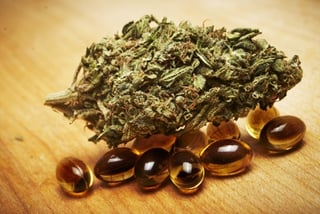 Edibles, gel capsules
Edibles, gel capsules
Oral bioavailability of hydrophobic (water-hating) bioactive compounds is known to be very low [1]. Poor water solubility of these compounds leads to slow and inefficient bloodstream absorption. In order to be absorbed, they must first travel through the stomach into the small intestine and become incorporated into mixed micelles by lipases, phospholipids and bile salts released by the gallbladder, after which they can be transported across the epithelial tissue into the bloodstream and to the liver (the "first pass effect"). Thus, it takes over an hour for cannabinoids consumed as edibles or gel capsules to start arriving in the bloodstream, and only about 6 - 8 % of the originally consumed amount ever makes it, the rest simply goes to waste. To make matters even worse, the absorbed amount is strongly dependent on each person's metabolism and other foods that may have been previously or simultaneously consumed, making it difficult to determine what dose should be administered.
How cannabis oil
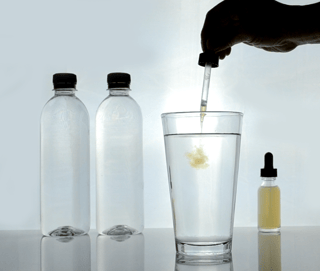
Pulmonary
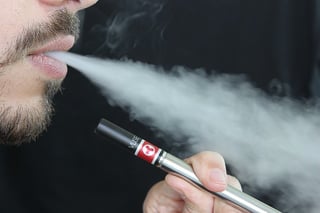
Smoking, vaping, dabbing
These methods involve creating and inhaling air suspensions of small cannabis oil droplets using heat from a flame (smoking) or an electrical atomizer coil (vaping, dabbing). Smoking is the most traditional cannabis consumption method that does not (but may) require any special equipment beyond rolling paper and a lighter. Many people, however, do not like the harsh experience and potential health hazards associated with smoking. Vaping and dabbing are commonly seen as safer and lower-cost alternatives to smoking. Although they are "cleaner" than smoking, these methods are also harsh on the lungs, produce odor and second-hand effects, and are associated with potential health risks [2, 3].
The main advantage of these methods is that they produce rapid effects. Cannabis oil droplets condensing in the lungs are quickly absorbed into the bloodstream and are directed to the brain and not the liver, as they would be in the case of digestive absorption. The bioavailability, on the other hand, is still relatively low and unpredictable, since most of the inhaled smoke or vapor is exhaled and lost, and the manner in which this happens strongly depends on the individual.
How cannabis oil

Transmucosal
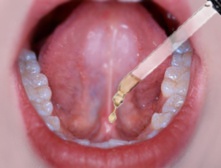
Sublingual, intranasal, rectal, ocular
During transmucosal delivery, active substances diffuse into the bloodstream through a mucous membrane, such as the tissues under the tongue (sublingual, via a tincture) [4] or in the nasal cavity (intranasal, via a nasal spray) [5]. Although significantly less common, the delivery may also be made through the rectal wall (rectal, via a suppository or cream) or the eye cornea (ocular, via a
The sublingual method of administering several drops under the tongue is common for consuming cannabis oil tinctures (cannabis extract solutions in a carrier oil or alcohol) and is relatively fast-acting and effective. Holding the drops under the tongue for a sufficient period of time is, however, rather difficult, and most patients end up swallowing the
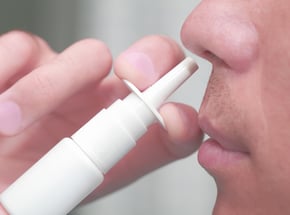
Nasal sprays are also commonly used to deliver cannabis oils through the well-vascularized mucosa of the nasal cavity directly into the systemic blood circulation. This intranasal method is fast and, in most cases, efficient, although somewhat uncomfortable and limited to small amounts of liquid per spray. The bioavailability of this administration method is also highly unpredictable due to the variability in the amount of sprayed liquid that passes through the nasal cavity and is swallowed. An upper airway infection or differences in spraying mechanisms can also result in strong pharmacokinetic variations [5].
Transdermal
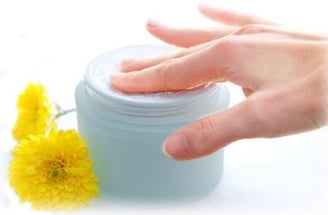 Creams, ointments, patches, topicals
Creams, ointments, patches, topicals
Transdermal delivery represents an attractive alternative to oral, pulmonary and transmucosal administration routes. With this method, active ingredients are absorbed into the bloodstream through the skin from an externally applied cream, ointment or patch. It should be pointed out that topicals are used for localized effects (e.g., to treat local inflammation, pain or skin conditions) rather than for the delivery into the systemic blood circulation and, therefore, are not the same as transdermal creams [7]. Although convenient, the transdermal delivery method using traditional formulations is slow and inefficient because of the complexity and low permeability of skin structure.
How to make water-compatible cannabis oil nanoemulsions
Cannabis oil nanoemulsions (a.k.a., water-soluble THC or CBD) are simple to make with Industrial Sonomechanics’ patented Barbell Horn Ultrasonic Technology (BHUT) and stabilizer packages. Nanoemulsions can comprise tens of mg/ml of cannabinoids, and may be made translucent, allowing them to be mixed into
Benefits of the ultrasonic production of cannabis oil nanoemulsions include:
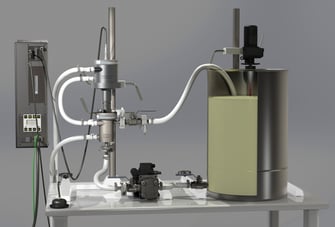
- Tens of liters (thousands of doses) per hour;
- Extremely small droplet sizes (translucent);
- Low surfactant requirements;
- Emulsifies all cannabinoids and terpenes;
- No damage to ingredients (e.g., THC, CBD);
- Simple, economical and safe processing;
- Easy equipment setup and maintenance;
- Direct laboratory-to-production scale-up.
Our high-amplitude ultrasonic processors can continuously produce food- and pharmaceutical-grade cannabinoid nanoemulsions on laboratory, bench and industrial scales, guaranteeing reproducible results and superior quality.
Further information on CBD and THC nanoemulsions, including how they can be prepared using ultrasonic liquid processors, is provided in our recent blog post: "All-In-One NanoStabilizer™ Simplifies Making Water-Soluble CBD and THC".
Have comments? Please do not hesitate to leave them below. We are preparing more articles on the topic of Medical Cannabis. Subscribe to our blog by using the link at the top of this page and you will be notified when they go live!
References:
-
L. Salvia-Trujillo, O. Martin-Belloso, D. McClements
, Excipient Nanoemulsions for Improving Oral Bioavailability of Bioactives, Nanomaterials, 6:1 (2016) 17. -
Smoke or Vape? The Benefits of Vaporizing Weed Over Smoking It. Retrieved from http://marijuanapolitics.com/smoke-vape-benefits-vaporizing-weed/
-
Are Dabs Bad for You? Side Effects of Dabbing Cannabis Concentrates.
Retireved from https://www.leafly.com/news/cannabis-101/safety-side-effects-of-dabbing -
Sublingual Administration. Wikipedia. Retrieved from https://en.wikipedia.org/wiki/Sublingual_administration.
-
Nasal Drug Administration. Wikipedia. Retrieved from https://en.wikipedia.org/wiki/Nasal_administration#cite_note-1
-
P. Jarho, A. Urtti, D.W. Pate, et al., Increase in aqueous solubility, stability and in vivo corneal permeability of anandamide by hydroxypropyl-β-cyclodextrin, Int. J. Pharm.,137:2 (1996) 209.
-
What Are Cannabis Topicals and How Do They Work? Retrieved from https://www.leafly.com/news/cannabis-101/what-are-cannabis-topicals
-
P.S. Lakshmana, S.P. Sharvanan, S. Aravindan, et al., Nanoemulgel for Transdermal Delivery of Cyclobenzaprine Hydrochloride: Design, Characterization and In-Vitro Studies, Nov. Appro. Drug Des. Dev., 1:5 (2017) 1.
.jpg?width=1994&height=332&name=Logo%20Sonomechanics%20White%20No%20Shadow%20R_Final%20(1).jpg)

